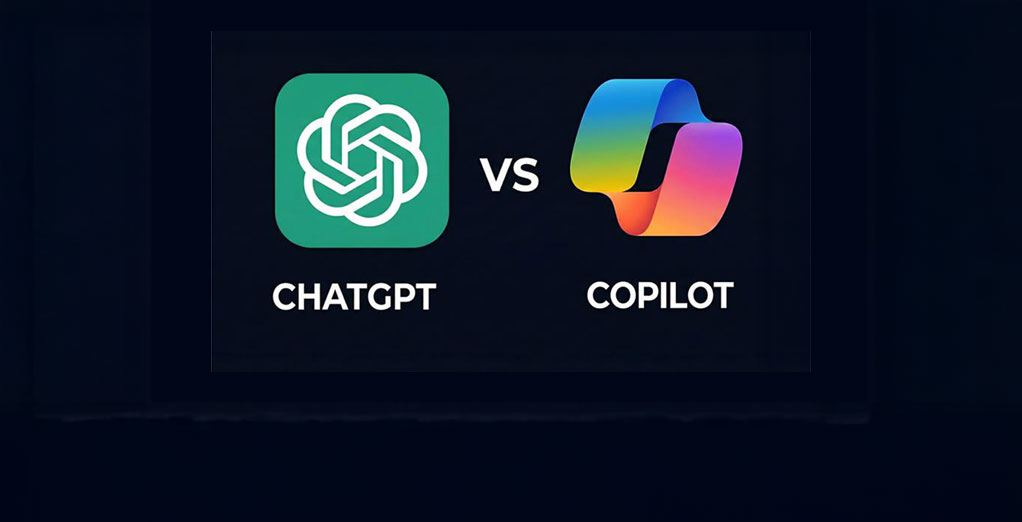Companies are in the constant lookout for the best strategies to be able to grow their business and beat the competition. The spectacular technological achievement that has been over time has been the movement of enterprise resource planning (ERP) systems to the cloud.
Enterprises have become increasingly reliant on SAP systems to manage critical business operations. Microsoft Azure has emerged as a leading platform for hosting SAP workloads, offering a unique blend of scalability, security, and innovation.
This comprehensive guide is designed to navigate you through the complexities of deploying and managing SAP workloads on Azure, ensuring a seamless transition that unlocks your enterprise’s full potential.
Key Statistics:
- 90% of Fortune 2000 companies use Azure (Source: Microsoft)
- 75% of SAP customers are planning to move their SAP landscapes to the cloud by 2025 (Source: SAPinsider)
Why Microsoft Azure for SAP Workloads?
The reason Microsoft Azure is the ideal platform for running SAP workloads is that the cloud has the strongest infrastructure and the possibility of coding and designing applications faster, without downtimes. My interaction with the cloud platforms led me to firmly believe that Microsoft Azure is the best platform for me because of the following factors:
- Certified for SAP workloads
- An extensive global data center network
- Advanced security features
- Comprehensive compliance certifications
- Integrated AI and machine learning capabilities
Benefits of Running SAP Workloads on Microsoft Azure
a. Enhanced Agility
- Rapid Scalability: Scale up or down to match fluctuating business demands without upfront hardware costs.
- Faster Deployment: Reduce deployment times for new SAP environments from weeks to mere hours.
b. Cost Optimization
- Total Cost of Ownership (TCO) Reduction: Minimize hardware, maintenance, and operational costs.
- Reserved VM Instances (RI): Save up to 72% on compute costs with one- or three-year commitments.
c. Deep Integration
- Microsoft 365 and Dynamics: Seamlessly integrate SAP with Microsoft’s productivity and business applications.
- Azure Services: Enhance SAP workflows with AI (e.g., Azure Machine Learning), IoT (e.g., Azure IoT Hub), and analytics (e.g., Azure Synapse Analytics).
d. Advanced Security
- Enterprise-Grade Security: Leverage Azure’s robust security features, including Azure Security Center and Azure Sentinel.
- Compliance Certifications: Align with major standards (e.g., GDPR, HIPAA, SOC 1, 2, and 3) through Azure’s comprehensive compliance program.
3. Deployment Options for SAP on Azure
a. Lift and Shift (Rehosting)
- Definition: Migrate SAP systems to Azure with minimal modifications.
- Benefits: Quick cloud adoption reduced upfront costs.
- Use Case: Ideal for testing, development, or temporary workloads.
b. Rethink and Re-architect
- Definition: Optimize SAP deployments for cloud-native scalability and efficiency.
- Benefits: Enhanced performance, improved resource utilization, and reduced long-term costs.
- Use Case: Suitable for production workloads requiring high availability and scalability.
c. Hybrid Approach
- Definition: Combine on-premises infrastructure with Azure services.
- Benefits: Phased migration, leveraging the best of both worlds.
- Use Case: Excellent for organizations with existing investments in on-premises infrastructure.
d. Managed Services
- Definition: Utilize Azure Managed Services for SAP to outsource management tasks.
- Benefits: Reduced operational burden, enhanced reliability.
- Use Case: Ideal for organizations seeking to focus on core business activities.
Follow Microsoft’s step-by-step SAP on Azure deployment guide
4. Security and Compliance for SAP Workloads
a. Data Security
- Azure Storage Service Encryption (SSE): Encrypt data at rest.
- Azure Disk Encryption (ADE): Secure VM disks.
- SAP Data Encryption: Leverage SAP’s built-in encryption capabilities.
b. Network Security
- Azure Virtual Network (VNet): Isolate SAP workloads.
- Network Security Groups (NSGs): Control inbound and outbound traffic.
- Azure Firewall: Enhance network security with a cloud-native firewall.
c. Identity and Access Management
- Azure Active Directory (AAD): Manage identities and access.
- SAP Single Sign-On (SSO): Integrate with AAD for seamless authentication.
d. Compliance
- Azure Compliance Offerings: Align with GDPR, HIPAA, SOC 1, 2, and 3, among others.
- SAP Compliance Solutions: Utilize SAP’s compliance tools integrated with Azure.
5. Best Practices for Optimizing SAP on Azure
a. Right-Sizing
- Assessment: Use Azure Migrate for assessment and right-sizing recommendations.
- Benefits: Cost efficiency, optimized performance.
b. Regular Updates
- SAP Updates: Stay current with SAP patches and updates.
- Azure Updates: Regularly review and apply Azure service updates.
c. Monitoring
- Azure Monitor: Utilize for infrastructure and application monitoring.
- SAP Solution Manager: Leverage for SAP-specific monitoring and management.
d. Backup and Recovery
- Azure Backup: Implement for secure, scalable backups.
- SAP Backup Solutions: Utilize SAP’s integrated backup tools with Azure.
Conclusion
Embarking on the journey to host SAP workloads on Microsoft Azure marks a significant step towards transforming your enterprise’s operational efficiency, scalability, and innovation capacity. By grasping the benefits, selecting the right deployment strategy, ensuring robust security, and adhering to best practices, you’re poised to unlock the full potential of your SAP investments on the Azure platform.
Appendix: SAP on Azure at a Glance – Comparison Table
| Feature | Azure | AWS | GCP |
| SAP Certified VMs | Yes, broad range (e.g., M-Series, HANA Large Instances) | Yes, limited (e.g., X1, X1e) | Yes, growing (e.g., N1, N2) |
| Deep SAP Integration | Native (e.g., with Dynamics, Microsoft 365) | Available, via partners (e.g., SAP Cloud Platform) | Developing (e.g., Google Workspace integrations) |
| TCO Optimization Tools | Azure Cost Estimator, Reserved VM Instances (RI) | AWS Cost Explorer, Reserved Instances (RI) | GCP Cost Management, Committed Use Discounts (CUD) |
| Security Compliance | Broad compliance portfolio (e.g., GDPR, HIPAA, SOC 1, 2, and 3) | Comprehensive compliance offerings (e.g., GDPR, HIPAA, SOC 1, 2, and 3) | Expanding compliance certifications (e.g., GDPR, HIPAA, SOC 2) |
| Free Trial/Accelerator | Free Account with $200 credit | Free Tier with limited services | Free Tier with $300 credit |
Azure is certified to the platform of your partner of the business which will make it satisfy the demands of the business. MangoMix employees and Board members are confident of the security released from Microsoft software which is proven all over the world. For example, EAPT currently running on XP (Exchange Server), was supported by Windows Server 2000 and later on SQL Server 2005.
Azure has one of the world’s largest and most widespread data centers. It enables you to move the SAP systems closer to the operations of your business hence reducing the latency time and improving the performance. Azure’s widespread presence also means that the customers can put their services in the nearest data center, thereby getting the services delivered faster and in compliance with local data residency policy.
Key Benefits of Running SAP on Azure
- Scalability and Performance
The infrastructure offered by Azure is additive on-demand enlargement of SAP workloads that permits organizations to the option of flexibility if and when they need it would be the most preferable way people access reserve and renewal options rather than buying a full day of power. The example is unique because it allows organizations to be elastic in case they need to work overtime or during peak seasons and it would be the best strategy for companies only having powers turned on in the morning.
- Cost Optimization
One big benefit from the “pay-as-you-go” model in Azure is of course the reduced upfront costs mainly related to capital investments equipment. The savings of cost are more than just a reduction of the expenses for hardware. It also includes the reduced need for IT support of local presence, shrinking power consumption, and quickly on-demand provisioning and de-provisioning. This mantra leads to significant savings in the long run.
- Enhanced Security and Compliance
Besides that, the presence of top-level security features like Azure AD and ASC in Azure puts extra security measures–which are tough to break–to the protection of SAP data and thus makes them more secure. Also, Azure’s compliance with numerous industry standards makes data protection initiatives enforceable.
Best Practices for SAP on Azure Implementation
Based on several of my hands-on experiences, one of the options that I am more likely to come up with would be a technique like the below one for the successful Azure-based SAP project:
- Make the assessment of the actual situation of your software
- Draw up a detailed plan of the software movement
- Choose Azure’s SAP-certified virtual machine sizes
- Implement a firm quality control and monitoring system
- Try Odata to get test data
- Clear all your cloud resources to bring cost under control
- Thorough Assessment
Namely, one of the must-do things before you change something in your SAP system is to perform a meticulous study of your current software architecture. Of course, this study includes the review of CPU, memory, hardware editions, integrations, and customizations.
- Detailed Migration Strategy
A good migration plan is a key measure to safe and efficient migration. This would involve drawing up a project calendar, the allocation of resources, and how the pilot will be run as well as a clear rollback plan. I have always recommended this strategy to my clients, and they mostly conduct mini-migrations with their non-critical systems to see first the problem zone before they move the whole SAP system.
- SAP-Certified VM Sizes
Azure infrastructure offers SAP-certified virtual machine dimensions for varied SAP workloads. Correct choice of VM dimension manifests not only better performance but cost-effectiveness.
- Robust Monitoring and Management
Proper monitoring of the health of the system and performance measurement are the key aspects of proper operation management of SAP on Azure. The software needed for the job is Azure Monitor for SAP Solutions that helps the company have all the necessary information about their SAP landscape in real-time hence they are enabled to make the necessary changes proactively.
- Disaster Recovery with Azure Site Recovery
An important set of tools that helps the implementation of business continuity plans are the disaster recovery options. In other words, Azure Site Recovery can potentially lower the organization’s vulnerability and limit the time in which business stays without its IT environment ‘up and running’.
- Regular Optimization
Regular optimization of Azure resources is the best way to lower costs. Such measures include using the right sizes of the virtual machines, leveraging the Azure Reserved Instances when the workloads are rather predictable, and closing down the non-production environments when these are not in use. Our clients have managed to subside their spend on Azure by as much as 30% through continuous optimization efforts.
Overcoming Challenges
Even with some good points, it is important to be reminded of the fact that there are also some potential challenges to face in this area:
- The migration process of established systems with lots of data is complicated
- The increase of the cloud technology
- First-time input of a particular selected decision
Indeed, it is a shared view of the opinion that through proper planning, training and acquiring professional advice from cloud experts one can find the problems to be insignificant. So that all enterprises can be squarely benefited by the soluti0n. Besides, our method helps organizations to get utilized to the new thin-client concept or vice versa and it further helps the business to come at a decision point which is the most critical key.
The complexity of bringing large, well-established SAP systems to Azure is daunting. Through my observation, phased migration is the most efficient and effective way to manage migration, such as starting with less critical systems. On top of that, using Azure migration tools and services can greatly facilitate the process.
Lack of skill is the number one reason why most enterprises do not register a success to the level they desire. I always suggest companies to train their IT teams in acquiring Azure skills or else, get qualified professionals to help with the setup. It is a fact that business automation improves the customer experience through finessed error detection and higher operational efficiency which also translates into higher revenues.
Initial performance tuning is usually needed when SAP systems are on-premises and especially when transferred to Azure. This touches database configurations, network optimization, and application configuration. It is true this process is a lengthy one, it can take from a few weeks up to a month, but it is a must to have it done if optimal performance is your goal.
Future Trends
For the future, I am expecting to see a lot of groundbreaking software solution innovation in the SAP on Azure spectrum.
- Currently, the popularity of SAP S/4HANA running on Azure is set to grow relatively
- Direct merging of the platform with AI and IoT technologies
- Smart automation of SAP operations via Azure
In the next few years, more SAP customers are expected to move their S/4HANA services to Azure. This superior ERP system that is loaded on to Azure virtual environments is the next level of production and it is the reality of our times provided we embraced the change of the digital business landscape.
AI and IoT themes are a profitable integration. Among my clients, several organizations for which I did some projects were in a way using Azure for machine learning to improve their SAP operations such as predictive maintenance in the manufacturing sector and personalized shopper experience in retail.
The automation of Azure Site Recovery for SAP operations will be of more intensity of use. This means automated scaling, self-healing systems, and AI-powered performance optimization. This will nearly do away with the time and manpower needed to manage the cloud servers.
Conclusion
Moving your SAP workloads to Microsoft Azure is a big step that makes it possible for the companies to enhance operation, reduce cost, and be creative. One of the many things that are possible to achieve with Azure’s cloud infrastructure is the transformation of SAP systems into light-footed, scalable, and future-ready platforms quickly.
As we are planning and thinking of the future, the trends of SAP and Azure will continue to grow leading to better business outcomes not only locally but also globally. For that reason, businesses who are planning to use SAP software with Azure cloud now should be in the hints of some common knowledge that will make sense prior to the event of shifting. With a well-prepared plan, pros consul, and definite work you will unleash the magic of this great combination and move your business to new levels in the digital realm.
In conclusion, it is not just about the technical burden of the shift from one technology to the other; rather, it is a matter of business evolution. Moreover, it is about rethinking who you are, how you work, and how you understand the value that you bring to your customers. Hence, always recall that the key to success is accurate planning, continuous learning, and endless exploration into uncertainties. Enterprise computing is nowadays in the SAP accelerator on Azure.
















































